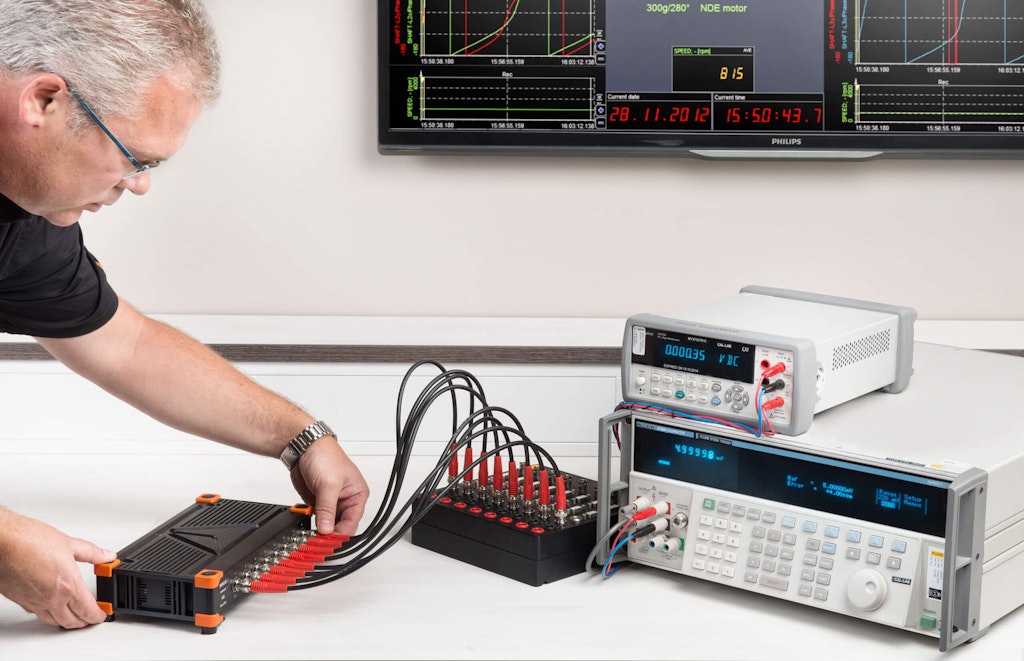Unlocking the Power of Data: The Essential Guide to Data Acquisition Systems
Unlocking the Power of Data: The Essential Guide to Data Acquisition Systems
Blog Article

In today's data-driven world, the ability to capture and analyze information is more critical than ever. Organizations across various industries rely on data to make informed decisions, optimize processes, and drive innovation. At the heart of this effort lies the Data Acquisition System, a vital component that facilitates the gathering and processing of data from multiple sources. Understanding how these systems work and their significance can unlock new opportunities for growth and efficiency.
Discover
Data Acquisition Systems serve as the backbone of data collection, enabling organizations to monitor and measure physical phenomena such as temperature, pressure, and flow. These systems come equipped with sensors and instruments that convert real-world signals into digital data that can be analyzed and interpreted. As technology advances, the capabilities of these systems expand, allowing for enhanced accuracy, speed, and scalability in data management. This guide will explore the essential aspects of Data Acquisition Systems, highlighting their importance and providing insights into how to effectively implement and utilize them in various applications.
Understanding Data Acquisition Systems
Data acquisition systems are essential tools used to collect and measure data from various sources. These systems can capture data from physical phenomena like temperature, pressure, and vibration, transforming them into digital signals that can be analyzed. By integrating sensors, data loggers, and software, data acquisition systems enable users to monitor and analyze real-time data, making them invaluable in fields such as engineering, research, and environmental monitoring.
The architecture of a data acquisition system typically consists of hardware and software components. The hardware includes sensors that detect changes in the environment, signal conditioning equipment to refine the data, and analog-to-digital converters that transform analog signals into digital form. The software component processes this data, allowing for visualization, storage, and analysis. This combination of hardware and software ensures that users can effectively capture and interpret the underlying signals accurately.
Understanding how these systems operate not only enhances the ability to collect data but also aids in making informed decisions based on the information gathered. With advancements in technology, data acquisition systems have become more sophisticated, incorporating wireless communication and advanced analytics. This evolution allows for greater flexibility and efficiency in data collection, empowering users to harness the full potential of their data.
Key Components of Data Acquisition Systems
A data acquisition system consists of several essential components that work together to gather and analyze data. At its core, sensors are vital for capturing physical phenomena such as temperature, pressure, and humidity. These sensors convert measurable physical quantities into electrical signals, which can be further processed. Depending on the application, different types of sensors may be used, including thermocouples, strain gauges, and flow meters, each tailored to capture specific data relevant to the system's needs.
Next, the signal conditioning unit plays a crucial role in preparing the raw signals generated by the sensors for further processing. This component amplifies, filters, and converts these signals into a format that can be easily interpreted by processing units. Effective signal conditioning ensures that the data is accurate and free from noise, which is essential for making informed decisions based on the acquired data. Without proper conditioning, even the most advanced sensors can produce unreliable results.
Finally, the data processing unit is where the real power of a data acquisition system is unlocked. This component typically consists of a computer or microcontroller equipped with software that analyzes the conditioned signals. It allows for data logging, visualization, and real-time monitoring, enabling users to gain insights from the data collected. Advanced data processing techniques, including data mining and machine learning, can also be implemented to extract deeper insights, making this component indispensable for effectively using a data acquisition system.
Applications and Benefits of Data Acquisition Systems
Data Acquisition Systems find their applications across various industries, including manufacturing, healthcare, environmental monitoring, and research. In manufacturing, these systems help monitor equipment performance, reducing downtime and optimizing production processes. In healthcare, they are essential for capturing and analyzing patient data, leading to improved patient care and more accurate diagnoses. Environmental monitoring utilizes data acquisition to track changes in climate and pollution levels, providing critical information for regulatory compliance and public health.
The benefits of implementing Data Acquisition Systems are numerous. They enable real-time data collection and analysis, allowing organizations to respond quickly to changes and make informed decisions. Improved data accuracy and reliability lead to better outcomes, whether in manufacturing efficiency, patient health, or scientific research. Additionally, these systems often integrate with other technologies, enhancing overall operational capabilities and facilitating more comprehensive data analysis.
Furthermore, data acquisition systems contribute to cost savings by automating data collection processes and reducing the need for manual data entry. This not only cuts labor costs but also minimizes the risk of human error, resulting in more reliable data. Businesses leveraging data acquisition systems can enhance their performance, maintain competitiveness, and drive innovation through better insights derived from their data.
Report this page